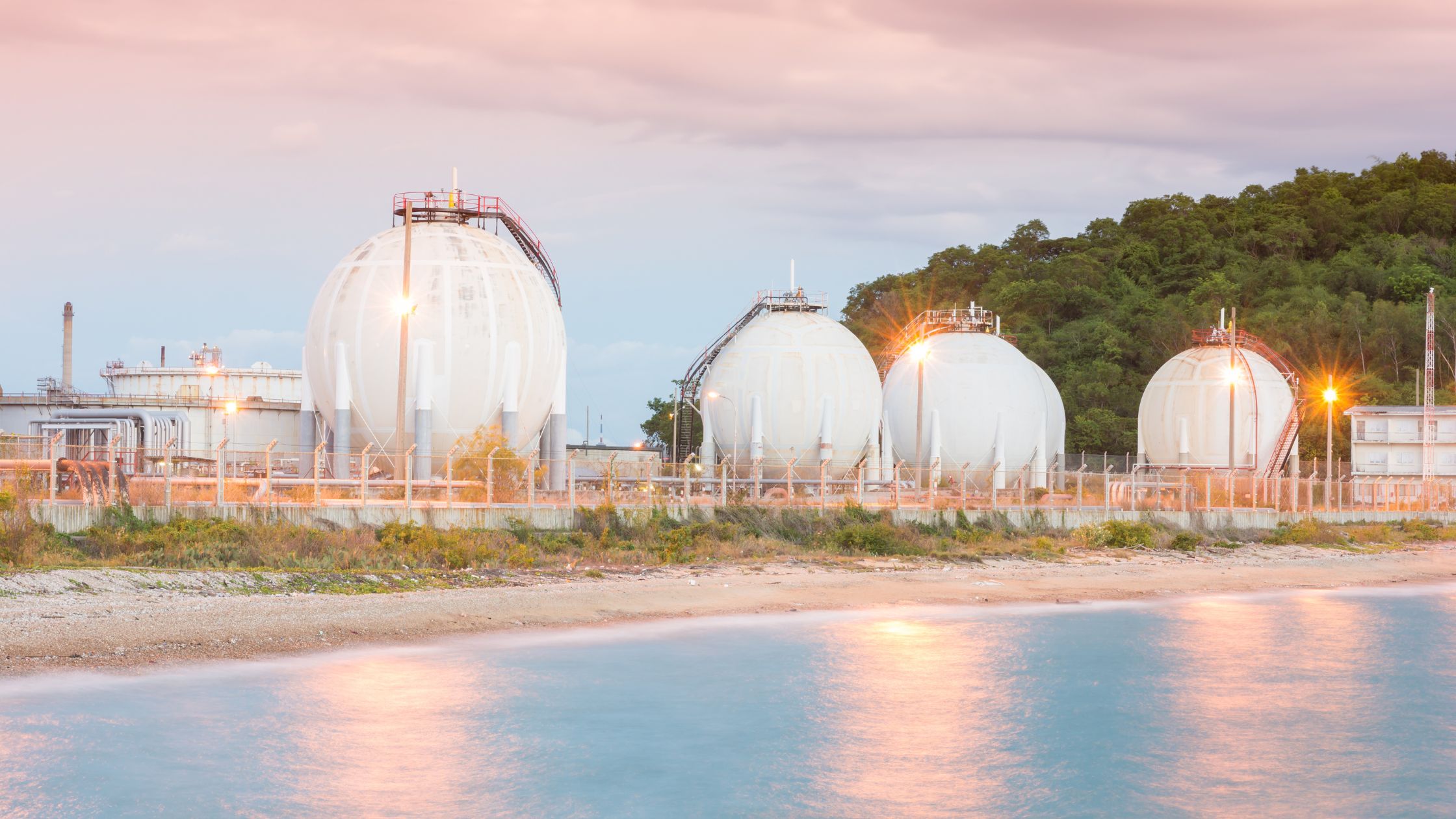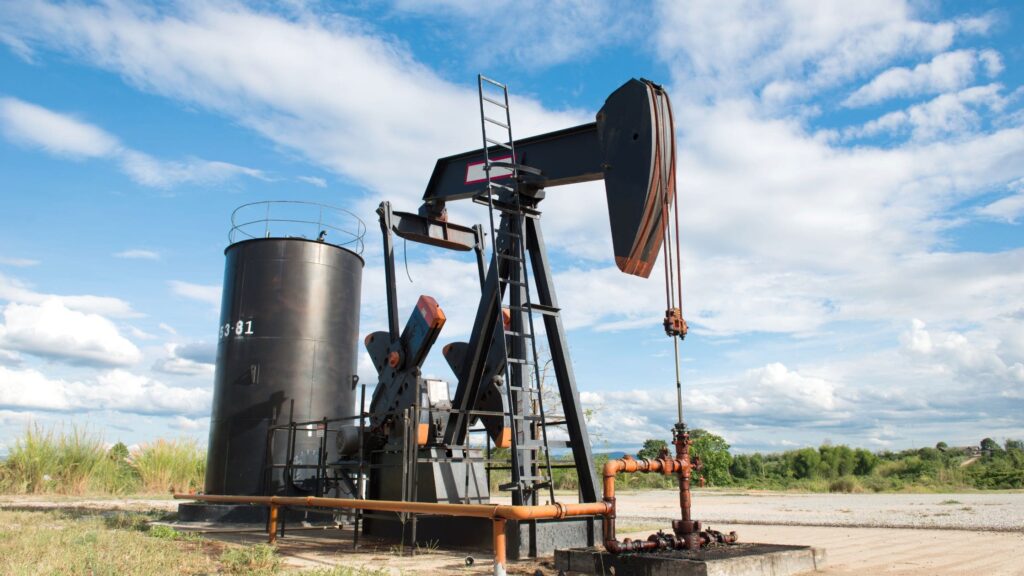This industry is vast, with companies that are some of the biggest and most powerful in the world. It’s divided into three main areas: upstream, which finds and gets oil and gas; midstream, which moves and stores it; and downstream, which refines and sells it. Together, these parts make sure oil and gas are available all over the world, showing how important they are for keeping economies stable and helping them grow.
In this article, we’ll focus on the different ways you can engage with this industry, whether you’re investing or simply curious about how it touches almost every aspect of our lives.
What Are the Key Benefits of Investing in Oil and Gas?
Investing in oil and gas presents a myriad of advantages that can enhance the financial portfolios of investors across the globe. These benefits stem from the industry’s vital role in the global energy supply, its economic influence, and the unique financial incentives it offers. As we delve into the specifics, it becomes evident why the sector continues to attract substantial capital from around the world, especially from those seeking robust investment returns in both stable and volatile markets.
Strong Return Potential
Investing in oil and gas offers the potential for significant capital gains, particularly during periods of heightened demand and escalating prices. Historically, investments in this sector have yielded returns that can far exceed the initial capital outlay, in some instances delivering gains that are multiple times the original investment. This high return potential is driven by the industry’s critical role in the global economy and its sensitivity to geopolitical events, which can lead to rapid price increases.
Tax Advantages
For investors, the oil and gas sector presents several tax benefits that enhance the attractiveness of this investment class. Key among these is the ability to deduct intangible drilling costs (IDC), which can include everything from labor and site preparation to temporary drilling installations. These costs are 100% deductible in the year they are incurred, offering a substantial reduction in taxable income. Additionally, tangible drilling costs (TDC), which relate to the physical equipment used in drilling, are also deductible, depreciated over a seven-year period. Moreover, the depletion allowance enables investors to deduct 15% of gross income from oil and gas wells, free from tax, which can significantly enhance the post-tax return on investment.
Diversification
Investing in oil and gas can significantly diversify an investment portfolio. This sector often shows an inverse correlation with other market segments, which can provide balance during economic downturns. When the broader market may be struggling, the oil and gas sector can thrive, offering a buffer against losses seen in other investment areas. This diversification benefit makes oil and gas a prudent choice for investors looking to spread risk and stabilize returns over the long term.
High Dividend Yields
Oil and gas companies are known for paying out higher-than-average dividends, which can be particularly appealing during profitable periods. These companies often generate substantial cash flow, a portion of which is regularly returned to shareholders in the form of dividends. For investors, this translates to a consistent income stream, making investments in this sector attractive for those seeking steady, passive income alongside capital appreciation.
Inflation Hedge
The prices of commodities like oil and gas typically increase with inflation, making investments in this sector a natural hedge against the eroding effects of rising prices. As inflation increases, so too can the price of oil and gas, which in turn can increase the value of investments in related stocks or physical assets. This relationship helps protect investors’ purchasing power, making oil and gas investments a strategic component of a well-rounded investment portfolio.
High Demand
Global demand for oil and gas remains high, driven by the continuous need for energy in residential, commercial, and industrial applications. Despite the growth of renewable energy sources, oil and gas have no immediate viable substitutes, ensuring ongoing demand. This sustained need not only stabilizes the industry but also supports long-term investment as emerging markets continue to expand their energy consumption, further driving the demand for oil and gas.
Government Backing and Incentives
The oil and gas industry often enjoys robust support from governments worldwide through tax incentives and policy frameworks designed to stimulate domestic production. These incentives can significantly enhance the sector’s investment appeal, making it a potentially lucrative field for investors. For example, tax incentives can offset upfront capital costs, making investments in oil and gas more accessible and financially attractive. These governmental supports are crucial for maintaining the industry’s growth and stability, providing a more secure investment environment.
Tangible Assets
Investments in oil and gas are backed by tangible assets, such as physical reserves of oil and the infrastructure required for their extraction and distribution. This tangibility provides a layer of security for investors, as the value of these assets typically does not depreciate as quickly as other types of assets can. Moreover, the physical nature of these investments adds a layer of protection against inflation and market volatility, making them a solid choice for those looking to preserve capital in a tangible form.
Energy Sector Growth
The ongoing global industrialization and economic development drive a continuous demand for energy, bolstering the growth of the energy sector, particularly oil and gas. This growth is not just steady but also spans across emerging markets, where the expansion of industrial activities ensures a sustained demand for oil and gas. Investing in this sector means participating in a globally significant growth trajectory that is likely to continue as energy needs expand with increasing urbanization and economic development.
Supply Constraints
The oil and gas industry is subject to supply constraints due to decreased exploration and production activities, which can, in turn, lead to price increases. These constraints often result from geopolitical tensions, regulatory changes, and other factors that can disrupt supply chains. For investors, such conditions can create opportunities for price surges that significantly enhance the profitability of oil and gas holdings. Being positioned in investments that can potentially capitalize on these fluctuations is a strategic advantage, offering the potential for substantial returns.
Geopolitical Influence
Control over oil and gas resources grants countries and their investors considerable geopolitical leverage, influencing global markets and policies. The strategic importance of these commodities can shift power dynamics on the world stage, making investments in the sector not only economically beneficial but also strategically significant. This influence often leads to more stable investment climates and predictable returns in regions with substantial oil and gas reserves, enhancing their appeal to investors globally.
Liquidity Options
The oil and gas sector provides a range of investment vehicles offering varying levels of liquidity, catering to different investor needs and risk profiles. From directly investing in physical assets and commodity futures to acquiring equity in publicly traded oil and gas companies, the sector allows investors to choose how quickly they can convert their investments into cash. This flexibility is a significant draw, enabling investors to balance their portfolios according to their liquidity requirements and investment horizons.
Long-term Income
Investments in oil and gas can yield long-term income, particularly through vehicles like mineral rights and royalties that provide sustained returns over decades. These investments are less susceptible to short-term market fluctuations, providing a steady income stream derived from the ongoing production and sale of oil and gas. Such characteristics make them an excellent option for generating passive income while also preserving capital in the long run.
Global Market Access
The global nature of the oil and gas markets offers investors access to a diverse range of opportunities across the world. From emerging markets with rapidly growing energy needs to established markets with steady demand, the sector spans a vast geographic and economic landscape. This global reach not only diversifies risk but also enhances potential returns as different markets may offer unique advantages in terms of growth rates, regulatory environments, and resource availability.
Employment Opportunities
The oil and gas sector is a significant employer worldwide, supporting countless jobs across its operations. From exploration, extraction, refining, and distribution, the industry requires a diverse range of skills and disciplines. This creates substantial employment opportunities and contributes to economic growth in regions involved in the oil and gas chain. For investors, supporting an industry that is a major job provider can translate into stable returns and resilient investments in the face of economic shifts.
Investment in Infrastructure Development
Investments in oil and gas directly contribute to the development and enhancement of essential infrastructure. This includes everything from drilling equipment to transportation pipelines and export facilities. Such infrastructure is crucial for the efficient functioning of the sector and often leads to broader economic benefits for the communities and countries involved. Investors not only contribute to but also benefit from the strengthening of this critical infrastructure, which supports sustained industry growth and stability.
Access to Emerging Markets
The oil and gas industry plays a pivotal role in emerging markets, many of which are rich in natural resources but require capital and expertise to fully develop their potential. Investing in these markets offers access to untapped resources and the opportunity to drive significant economic development. For investors, this means access to high-growth potential in regions that are increasingly contributing to global energy supply, offering a strategic expansion of investment portfolios into new and lucrative territories.
Price Volatility Benefits (for traders)
While often viewed as a risk, the inherent price volatility in the oil and gas markets can also offer substantial benefits, particularly for traders. Price fluctuations can create opportunities for significant short-term gains through strategic trading of oil and gas futures, stocks, and other related financial instruments. For those with the expertise to navigate this volatility, it presents a dynamic avenue for investment that can yield high returns relative to other sectors.
Strategic Asset in Energy Security
Investing in oil and gas is crucial for national energy security. These commodities play a pivotal role in sustaining economic stability and are fundamental to a country’s energy independence. Investments in this sector ensure that a nation can produce its own energy resources, reducing dependence on foreign oil and enhancing geopolitical strength. This strategic asset not only secures a supply chain but also buffers an economy against potential shocks from international energy market fluctuations.
Ability to Participate in Joint Ventures and Partnerships
The oil and gas industry is uniquely positioned to offer investors opportunities to engage in joint ventures and partnerships. These collaborative arrangements allow for risk sharing and resource pooling, providing access to greater resources and diversified investments. By participating in such ventures, investors can leverage collective expertise and financial strength, which can lead to more significant exploration projects and the development of advanced technologies. This cooperative approach enhances the potential for discovering new reserves and optimizing resource extraction, making it a compelling option for those looking to invest in this sector.
Can Investing in Oil and Gas Provide Substantial Financial Returns?
Yes, investing in oil and gas has historically offered substantial financial returns, significantly exceeding initial capital in many cases. These investments can be highly lucrative, particularly during periods of high demand and rising oil prices. Many investors are drawn to the oil and gas sector for its potential to generate both capital gains and attractive dividend income. As global energy consumption continues to grow, the financial returns from investing in this sector can be profound, making it a compelling option for those looking to enhance their investment portfolios.
What Tax Advantages Do Oil and Gas Investments Hold?
Oil and gas investments offer several tax advantages that can significantly enhance investor returns. Here’s a breakdown of major tax deductions and credits available:
- Intangible Drilling Costs (IDC) Tax Deductions: IDCs typically constitute about 75% of drilling costs and are 100% deductible in the first year. These costs include expenses like wages, fuel, and drilling supplies, directly reducing taxable income significantly.
- Tangible Drilling and Development Costs (TDC) Deductions: TDCs account for approximately 25% of total drilling costs. These costs are capitalized and depreciated over 5-7 years, offering ongoing tax benefits and reducing the taxable income each year.
- Depletion Allowance: Allows for a deduction of 15% of gross income from the oil and gas production, continuing even after the cost basis of a well is fully recovered. This deduction is similar to depreciation but specifically designed for natural resources.
- Qualified Business Income Deduction: Under Section 199A, individual investors can deduct up to 20% of their qualified business income from their participation in oil and gas ventures, lowering their tax liabilities further.
- Active vs. Passive Income Reporting: Losses from oil and gas operations can often offset other forms of active income, providing additional tax savings.
- Small Producer Tax Exemption: Qualifying small producers can exclude 15% of their gross production revenue from taxes, under certain conditions.
How Can Oil and Gas Investments Impact Passive vs. Active Income Reporting?
When you engage in oil and gas investments, understanding the classification between active and passive income can be crucial due to its implications on your taxes. Typically, income from these investments is considered active, which is a key benefit for many investors. This classification means that losses incurred from oil and gas operations can offset other sources of active income—like salaries or business income. This ability to balance income and losses across different activities can provide a significant tax relief, enhancing the attractiveness of oil and gas ventures as an investment vehicle.
Is It Safe to Invest in Oil and Gas?
Investing in oil and gas involves understanding the array of risks that come with this dynamic industry. Below, we delve into some of the primary challenges and hazards that might impact your investment returns:
- Cyclicality and Volatility: The oil and gas sector is renowned for its cycles of booms and busts, which can significantly influence investment returns. Price fluctuations are common, responding to changes in supply, demand, and global economic conditions. This cyclicality can pose a risk to profitability, particularly for those not prepared for sudden downturns.
- Geopolitical Factors: Oil and gas markets are extremely sensitive to geopolitical events which can disrupt supply chains and impact global supply and demand. Conflicts, trade agreements, and international politics can all cause significant price shifts that affect the profitability of oil and gas investments.
- Environmental Issues and Regulations: Increasingly stringent environmental regulations aimed at combating climate change can impose heavy costs on operations within the sector. Public sentiment moving towards renewable energy sources continues to grow, potentially leading to decreased demand and stricter regulations on fossil fuels, including oil and gas.
- Uncertainty in Exploration and Production: Exploration and production carry inherent risks. There’s always the potential for drilling projects to fail to find commercially viable quantities of oil or gas. Such ventures can result in substantial financial losses, particularly for smaller or less diversified investors.
- Safety Concerns: Operational hazards, including oil spills and accidents, can lead to significant environmental damage, hefty fines, and loss of investor confidence. These events can tarnish a company’s reputation and inflict serious financial damage.
Volatility of Oil Prices
The volatility of oil prices is a double-edged sword. On one hand, significant price increases can lead to high returns on investments; on the other, price drops can lead to equally substantial losses. External factors such as OPEC’s production decisions, geopolitical unrest in oil-rich regions, and global economic performance heavily influence oil prices. Moreover, innovations in alternative energy sources can shift demand away from oil and gas, leading to price decreases.
Geopolitical Factors
Geopolitical issues significantly influence oil and gas markets due to the global distribution of fossil fuel reserves. Conflicts in oil-rich regions can lead to supply disruptions, affecting global oil prices and investment returns. Additionally, trade policies and economic shifts in major consuming countries such as the United States, China, or members of the European Union can alter market dynamics overnight. Investors must stay informed of international events as these can swiftly impact their investments, sometimes with severe consequences.
Environmental Regulations
The increasing focus on environmental sustainability has led to stringent regulations across the oil and gas industry, significantly impacting operations. Environmental, Social, and Governance (ESG) standards are becoming critical in shaping the industry’s future. Investors now not only need to consider financial factors but also the environmental impact of their investments. These regulations can lead to additional operational costs, changes in business practices, and are a driving force behind the industry’s shift toward more sustainable energy sources. Compliance with these standards is essential for the continued viability and acceptance of oil and gas operations.
What Strategies and Practices Can Help Reduce the Inherent Risks Associated with Oil and Gas Investments?
Investing in oil and gas involves significant risks, but with strategic planning and careful management, these can be mitigated. Here are some effective strategies to help you manage and potentially reduce the risks associated with oil and gas investments.
- Diversification: One of the fundamental strategies to reduce investment risk is diversification. By spreading your investments across various assets and sectors, including oil and gas, you can protect your portfolio from volatility in any single area. Diversification helps to balance the risks and can stabilize returns over time.
- Investing in Larger, Stable Companies: Allocating funds into larger, well-established oil and gas companies can offer more stability compared to smaller entities. These companies usually have more robust financial structures, extensive resources, and a better ability to weather market downturns, thus providing a safer investment avenue.
- Staying Informed: Keeping abreast of market trends, geopolitical developments, and changes within the oil and gas industry is crucial. Being informed allows you to make proactive adjustments to your investment strategy, safeguarding your assets against unforeseen market shifts.
- Consulting Experts: Working with financial advisors and industry specialists can provide you with insights and expertise that are essential for making informed decisions. These professionals can offer guidance tailored to the specific nuances of the oil and gas sector, enhancing your ability to navigate its complexities.
- Focusing on Tax-Advantaged Investments: Oil and gas investments often come with significant tax benefits, which can help mitigate financial risk. By focusing on investments that offer tax advantages such as deductions for intangible drilling costs or depletion allowances, you can effectively reduce the taxable income and enhance the overall return on investment.
How to Start Investing in Oil and Gas?
Entering the oil and gas investment market requires careful planning and consideration. Here’s a step-by-step guide to help you start investing in this sector.
- Education: Understanding the oil and gas industry’s market dynamics and inherent risks is the first step. Educate yourself about the different segments of the industry, including exploration, production, refining, and distribution, as well as the economic factors that influence oil and gas prices.
- Financial Evaluation: Determine your financial capacity and risk tolerance. Assess how much you are willing to invest and what level of risk you can comfortably handle. This will help you in choosing the right investment vehicles that align with your financial goals.
- Choose an Investment Vehicle: There are multiple ways to invest in oil and gas, including direct investments in drilling projects, buying stocks of oil and gas companies, investing in ETFs, mutual funds, or Direct Participation Programs (DPPs). Each option comes with different levels of risk and involvement, so choose one that fits your investment strategy.
- Consult a Tax Professional: Given the complexity of tax implications associated with oil and gas investments, consulting with a tax professional is advisable. They can provide valuable advice on maximizing tax benefits such as intangible drilling cost deductions, depletion allowances, and more.
What Are the Different Ways to Invest in Oil and Gas?
Investing in the oil and gas industry presents various options, each catering to different investor profiles with specific requirements and expectations. Understanding these options can help you align your investment with your financial goals, risk tolerance, and investment strategy.
Direct Investments
Direct investment in oil and gas offers investors a hands-on approach with potentially high rewards but also significant risks.
Working Interests
Ownership in the operation of oil and gas wells allows you to actively participate in the extraction and sale of oil and gas.
- Pros: Potential for high returns and substantial tax benefits, including deductions for drilling costs and depletion.
- Cons: Comes with a high degree of risk due to the volatile nature of the market and potential liability exposure. Investors must be prepared for the possibility of dry wells or production shortfalls.
Mineral Rights Ownership
Ownership of the resources beneath a piece of land provides a more passive investment option compared to working interests.
- Pros: Offers long-term passive income if the owned land produces oil or gas. There are also significant tax advantages, such as deductions related to depletion and depreciation.
- Cons: Requires a large upfront capital investment and involves complex legal and management considerations. The income is highly dependent on the success of the extraction process, which can be uncertain.
Direct Participation Programs (DPPs)
Pooling funds with other investors to participate in drilling projects allows for shared risk and resources in the pursuit of lucrative oil and gas ventures.
- Pros: Investors can access substantial tax benefits and potentially high returns directly linked to the success of the projects.
- Cons: These investments are typically illiquid and bear high risk, depending largely on the success of the drilling operations they fund.
Oil and Gas Drilling Funds
Investing in funds that finance the operations of drilling offers a more structured approach to investing in oil and gas.
- Pros: Investors can take advantage of significant tax deductions up front, contributing to immediate financial benefits.
- Cons: The high-risk nature of drilling can lead to potential losses, especially if the drilling does not yield the expected volume of oil or gas.
Indirect Investments
Indirect investments allow you to participate in the oil and gas sector without direct involvement in the operations of extraction and production. These options provide different levels of exposure to the industry, accommodating diverse investment preferences and risk tolerances.
Stocks of Oil and Gas Companies
Investing in the stocks of companies that explore, produce, or manage oil and gas resources is a straightforward way to gain exposure to the sector.
- Pros: This option offers liquidity and the potential for dividend income. It also allows you to choose from a range of companies, from global giants to niche players.
- Cons: Stock values are closely tied to oil prices, which can be highly volatile. This exposes investors to market fluctuations and potential losses.
Exchange-Traded Funds (ETFs) and Mutual Funds
ETFs and mutual funds that focus on oil and gas companies provide a way to invest in a diversified portfolio of energy stocks.
- Pros: Diversification reduces risk by spreading investments across various companies, mitigating the impact of any single company’s performance.
- Cons: These funds come with management fees, and investors have less control over the specific stocks included in the fund’s portfolio.
Master Limited Partnerships (MLPs)
MLPs are partnerships that own and operate assets in the oil and gas sector, primarily focusing on storage and transportation.
- Pros: They often offer high yield returns and tax benefits, as they do not pay corporate income taxes.
- Cons: The complexity of tax reporting and sensitivity to interest rate changes can be challenging for some investors.
Qualified Opportunity Funds in the Energy Sector
These funds are designed to invest in designated opportunity zones, including energy projects. Investments in these funds can defer or eliminate capital gains taxes.
- Pros: Tax incentives include deferral of taxes on previously earned capital gains and potential elimination of taxes on gains earned from the opportunity fund investment.
- Cons: The commitment is long-term, and the regulatory framework can be complex, requiring thorough understanding and often legal advice.
Financial Instruments
Investing through financial instruments allows you to participate in the oil and gas sector without direct involvement in physical operations. These instruments can offer high returns but also carry a significant level of risk, thus requiring a clear understanding and strategy.
Futures Contracts
Futures contracts are agreements to buy or sell oil at a predetermined price on a specified future date. They are standard in commodity markets, including oil and gas, allowing investors to hedge against price fluctuations or speculate on movements in oil prices.
- Pros: Futures can generate high returns if market trends are accurately predicted.
- Cons: They carry a high level of risk, as prices can be highly volatile. Significant expertise in market analysis is required to manage potential losses.
Options on Futures
Options on futures provide the right, but not the obligation, to buy or sell a futures contract at a specific price before the option expires.
- Pros: They offer greater leverage, allowing investors to gain a significant position while committing a relatively small amount of capital upfront. Options provide flexibility to capitalize on market predictions without the obligation to execute the trade.
- Cons: Options are complex financial instruments that can expire worthless if the underlying asset does not reach the strike price before expiration. They require a sophisticated understanding of both the market and the instrument.
Real Estate and Royalty Interests
Investing in oil and gas does not always require direct engagement with the physical elements of the industry. Real estate and royalty interests present a more passive approach, allowing investors to reap benefits from the sector without managing day-to-day operations.
Royalty Interests
Royalty interests represent a form of investment where you earn a percentage of the production revenue without the responsibilities tied to the operation or management of the wells.
- Pros: This type of investment allows for passive income, as you are not directly involved in the operational aspects. It usually carries less liability compared to direct operational roles.
- Cons: The income is directly dependent on the level of production. If the well’s output diminishes, so does the income, which can vary significantly over time.
Limited Partnerships
Limited partnerships in oil and gas ventures offer a way to invest without taking on the full liability of operations.
- Pros: Investors benefit from substantial tax deductions and have limited liability concerning the partnership’s debts and obligations.
- Cons: These investments can be quite illiquid, making it difficult to sell your share if needed. You also have less control over the operational decisions compared to direct ownership.
Conclusion
It’s clear that the oil and gas industry offers a lot of opportunities. Whether you’re considering dipping your toes into the market through royalty interests or diving deeper with a limited partnership, the potential for substantial returns is compelling. Each investment avenue we’ve discussed comes with its own set of benefits and risks—ranging from the allure of passive income to the challenges posed by fluctuating market conditions and regulatory shifts.
Investing in oil and gas isn’t for the faint-hearted; it demands vigilance and a proactive approach. We recommend that you not only do your homework but also engage with experienced financial and tax advisors. By doing so, you can tailor these opportunities to fit your personal investment goals and risk profile. Remember, informed decision-making is your best tool when navigating the complex, yet potentially rewarding, world of oil and gas investments.








